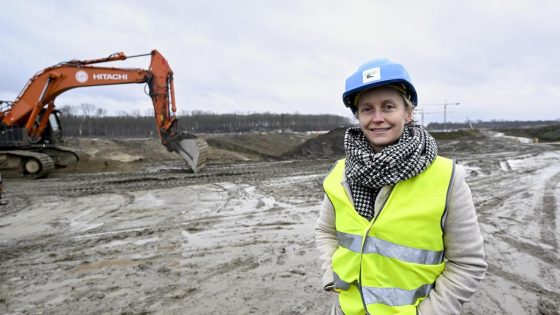The Flemish government is set to make a crucial decision about the Geïntegreerd Investeringsprogramma (GIP), a multi-billion euro infrastructure plan that will shape Belgium’s transport and public works landscape. With a budget of 2.2 billion euros annually over the next five years, the GIP includes projects ranging from new roads and bike paths to sluices and dredging works. On 2025-07-09 11:59:00, the government aims to clarify how much funding will go to major cities like Antwerp versus the rest of Flanders, often referred to as “the parking.”
- Vlaamse regering beslist over 2,2 miljard euro investeringen
- Minister Annick De Ridder waakt over Antwerpen
- Fietsbrug over Schelde kost tussen 150-250 miljoen
- CD&V en Vooruit kritisch over fietsbrugkosten
- GIP-plan mogelijk ingekort van vijf naar drie jaar
- Definitieve beslissing over projecten verwacht 18 juli
At the centre of this decision is Annick De Ridder, the Flemish Minister of Mobility and Public Works, who faces pressure to balance investments carefully. How will the government reconcile competing demands from urban centres and rural areas? And what will be the fate of the controversial Antwerp cycling bridge over the Scheldt, a project costing up to 250 million euros?
These questions are at the heart of the ongoing debate, with a final verdict expected soon. The outcome will reveal the government’s priorities and impact mobility across Belgium. Here’s the fast answer to what’s at stake.
Will the large investment in Antwerp’s cycling infrastructure pay off, or is it diverting funds from more widespread projects? The debate highlights key challenges in regional planning:
- Antwerp’s bike bridge has strong support from N-VA but faces opposition from CD&V, who prefer rural investments.
- The government may reduce the bike bridge budget to 150-200 million euros over two years as a compromise.
- Projects are selected based on economic and social impact, with 7 billion euros worth of requests being carefully scrutinised.
- The GIP’s timeframe might shorten from five to three years, allowing for earlier evaluation and adjustments.
As the Flemish government finalises its investment choices, stakeholders and residents should watch closely. Will the planned projects deliver the promised benefits, or will political compromises dilute their impact? The coming weeks will be critical in shaping Belgium’s infrastructure future.
































